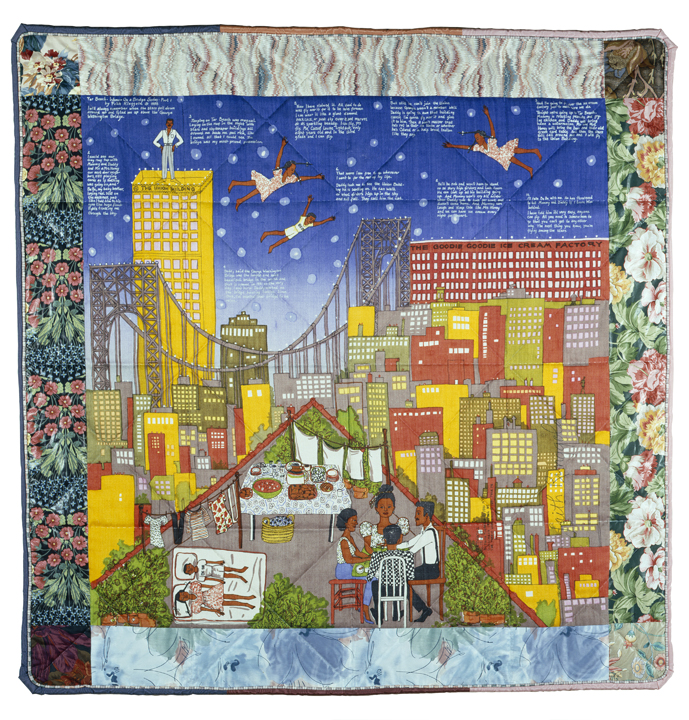
On May 12, 2012, in a video for the Threads episode of Craft In America: PBS Documentary Series & Museum, Ringgold explained her artistic and technical process as well as her inspiration for creating Tar Beach's illustrations, which were original textile pieces photographically reproduced for the book. 21, 2016, author Ringgold read her book on film for NPR. Tar Beach 2 is what Faith Ringgold refers to as a story quilt. Tar Beach was also a New York Times Best Illustrated Book and winner of the Parents' Choice Gold Award.

She was also the runner-up for the Caldecott Medal, the premier American Library Association award for picture book illustration. Awards įor Tar Beach, Ringgold won the Ezra Jack Keats New Writer Award and the Coretta Scott King Award for Illustration. As spoken by Faith Ringgold in an interview with cultural critic and daughter Michele Wallace, Tar Beach was not written for children but rather to recall the essence of childhood and invoke the memories associated with it. McNair describes how Tar Beach is unique in its use of literary innovations, particularly its combination of various artforms such as quilt making, autobiography, and painting. Cassie's dearest dream is to be free to go wherever she wants, and one day it comes true when the stars help her to fly across the city.Ĭhildren’s literature scholar Jonda C. Tar Beach is the roof of Cassie's Harlem apartment building. Tar Beach, Ringgold's first book, was a Caldecott Honor Book for 1992. Quilting: What is a quilt Quilting is an art form. Mood - the feeling or emotion suggested or created in the viewer by a work of art. Tar Beach, written and illustrated by Faith Ringgold, is a children's picture book published by Crown Publishers, Inc., 1991. Art Masterpiece: Tar Beach by Faith Ringgold 6thGrade:Lesson5(April) Landscape - a painting or drawing showing a scene from nature, often including mountains, trees, rivers, fields and other outdoor scenery.

If you would like to publish text from MoMA’s archival materials, please fill out this permission form and send to. If you would like to reproduce text from a MoMA publication, please email. For more information about film loans and our Circulating Film and Video Library, please visit.

For access to motion picture film stills for research purposes, please contact the Film Study Center at. Motion picture film stills cannot be licensed by MoMA/Scala. All requests to license archival audio or out of copyright film clips should be addressed to Scala Archives at. At this time, MoMA produced video cannot be licensed by MoMA/Scala. MoMA licenses archival audio and select out of copyright film clips from our film collection.

If you would like to reproduce an image of a work of art in MoMA’s collection, or an image of a MoMA publication or archival material (including installation views, checklists, and press releases), please contact Art Resource (publication in North America) or Scala Archives (publication in all other geographic locations).


 0 kommentar(er)
0 kommentar(er)
